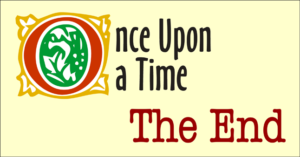
02 Mar One Word Picture Is Worth A Thousand Words
Have you ever heard the term, word picture? If you are a trained interpreter, chances are you have. Often, it is explained as a remedy; a way to describe a term that has no equivalent in the target language. However, word pictures are much more than that; they are the manifestation of what we interpreters do out in the field every single day.
A couple of months ago, the word picture concept came up in a class I was teaching and, off the top of my head, I couldn’t think of any examples in Spanish. My initial explanation was that between English and Spanish, we have most of the equivalent translations that we need. Certainly, there are times when we may not have a direct translation. But for the most part, I opined, word pictures were more common in languages of lesser diffusion.
 I now realize what a faulty explanation that was. The truth is, all we do as interpreters is paint word pictures. And once we understand that, our job becomes so much easier.
I now realize what a faulty explanation that was. The truth is, all we do as interpreters is paint word pictures. And once we understand that, our job becomes so much easier.
Think back, for a moment, to the last time somebody in your family became sick. Recall, in your mind, their symptoms and the way that they acted or felt. Do you have that image in your mind now? Great. Can you describe it in any of the languages you know? Of course, you can. You have the idea in your mind, and you are painting it with your words. That, my friends, is a word picture.
The thing is, we interpreters usually get so stuck in the words themselves that we lose sight of the larger picture. In an effort to capture every nuance, every modifier and every detail, we forget to pay attention to the story these words are painting. It’s like focusing really, really hard on choosing our paint colors as if the colors themselves were the most important part of a piece of art.
Meanwhile, the interpreter who is lost in the individual words themselves becomes overwhelmed. “I’m fine with one or two sentences,” we say, “but when the speaker keeps going, I can’t remember it.” What we forget is that this is not about memory. It is about listening, picturing, and understanding until a clear image of what the speaker is saying has been painted in our minds. At that point, our job becomes simple. We just have to paint that picture in the other language.
As with most things, this is always easier said than done. But the tricky part is not the initial attention we must pay or the final words we choose to paint the picture. Rather, it is calming our minds of all distractions so that we can focus on the speaker with the utmost concentration. To remember, we must forget what will come later. We must trust in our ability to listen and to speak, and then polish our attention until it is razor sharp. “Oh my gosh, how can I remember all this,” is a nagging voice that we must eliminate in order to do our jobs properly.
If you don’t believe me, go ahead and try it out. The next time you have a moment at home (you should always test new techniques at home before applying them to a real-life situation) listen to a quick segment of a speech. Don’t think of what will come next. Work to clear your mind of anything but the highest attention to what the speaker is saying in the original language. Once you have trained yourself to pay attention, you will easily be able to express their story in your own words. The rest of the color (details, modifiers, etc.) will soon follow. So, go ahead and paint those pictures. I bet you didn’t realize you were an artist, did you?
 Athena Matilsky fell in love with Spanish the year she turned 16. She chose it as her major at Rutgers University and selected a focus in translation and interpreting. After graduation, she taught elementary school in Honduras and then returned home to begin freelancing as a medical and court interpreter. She has since achieved certifications as a Healthcare Interpreter and a Federal Court Interpreter. She was the recent editor-in-chief of Proteus. Currently, she works as a freelance interpreter/translator and trains candidates privately for the state and federal interpreting exams. When she is not writing or interpreting, you may find her practicing acroyoga or studying French. Website: https://athenaskyinterpreting.wordpress.com/
Athena Matilsky fell in love with Spanish the year she turned 16. She chose it as her major at Rutgers University and selected a focus in translation and interpreting. After graduation, she taught elementary school in Honduras and then returned home to begin freelancing as a medical and court interpreter. She has since achieved certifications as a Healthcare Interpreter and a Federal Court Interpreter. She was the recent editor-in-chief of Proteus. Currently, she works as a freelance interpreter/translator and trains candidates privately for the state and federal interpreting exams. When she is not writing or interpreting, you may find her practicing acroyoga or studying French. Website: https://athenaskyinterpreting.wordpress.com/
Click here to access Athena’s other posts.

Visualization is an important tool in our profession. Being able to “see” what is being said and better relate to it helps improve the accuracy of our rendition. That is a technique I also like to use in the booth, especially when dealing with speakers who go off-the-cuff. In those cases, having some background on the speaker can be the key to success or disaster.
Thank you, Athena.
Very well put. I have always wondered why some of the younger interpreters get so freaked out by having to do a consecutive witness testimony assignment. They are so focused on getting each word correct, they lose sight of the whole story being told….the “whole word picture” if you will….
very helpful advice. I will keep it in mind.
A very useful advice to bear in mind while interpreting!